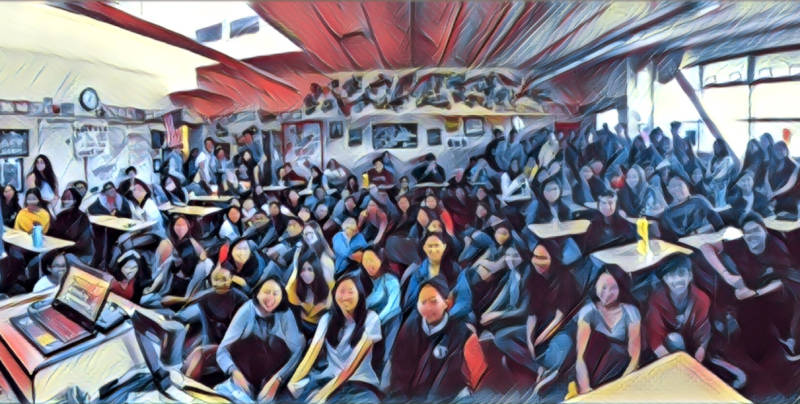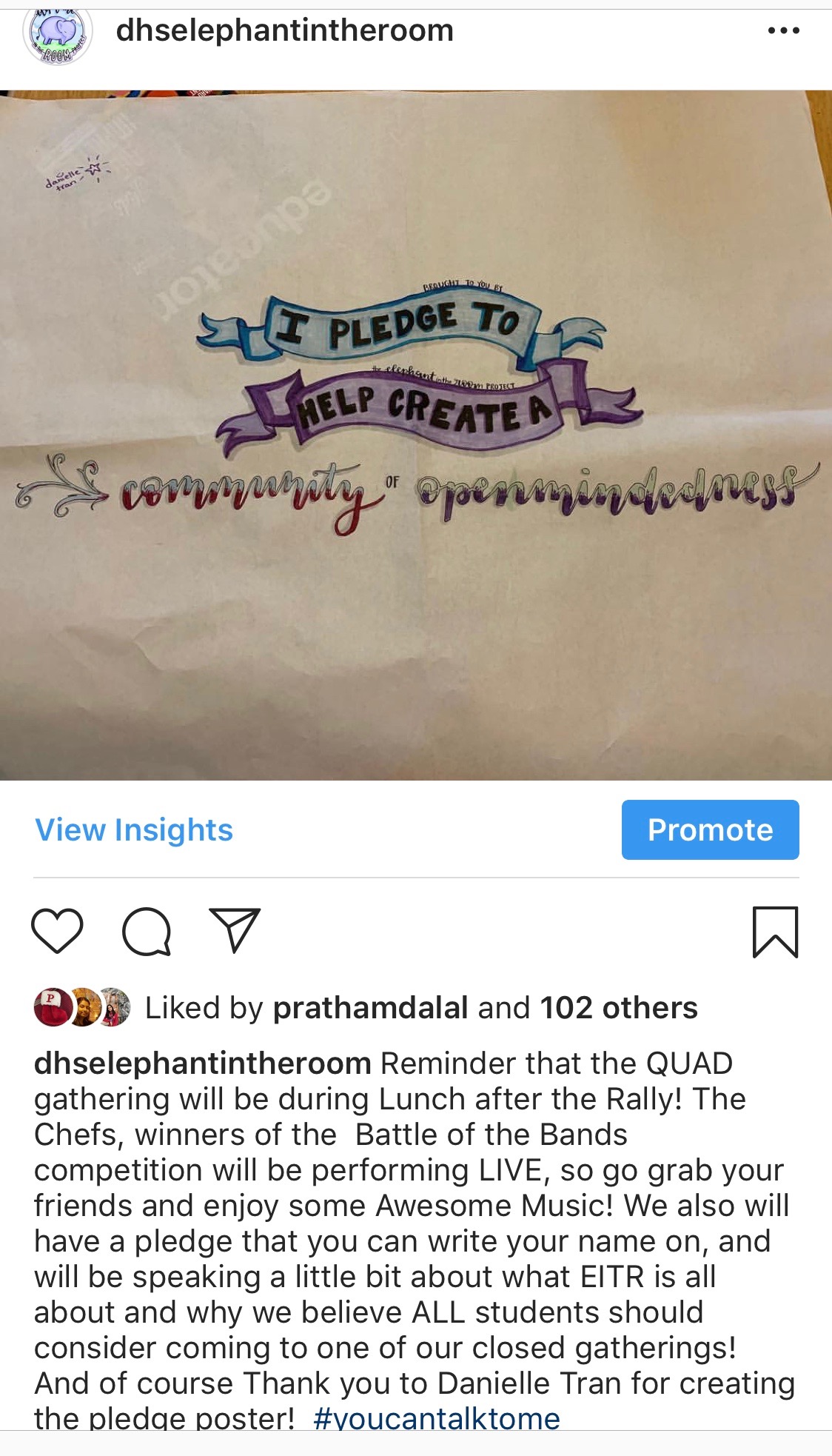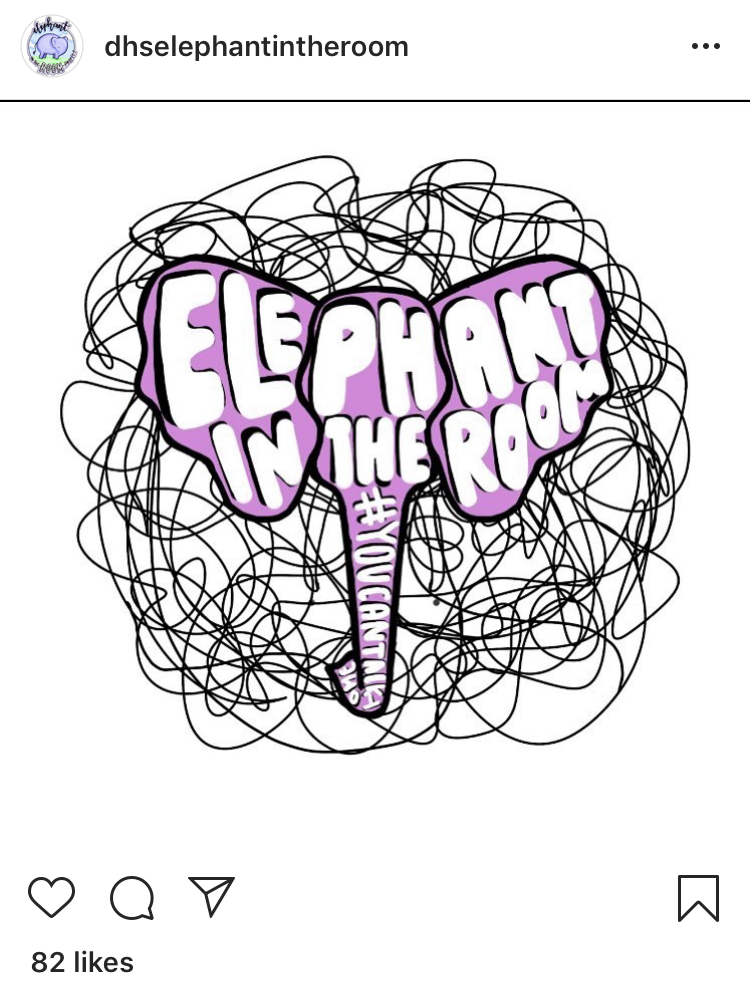Far too many of our secondary students struggle with depression, suicidal thoughts, anxiety and isolation. In my eight years of teaching high school English, I have found more of my time on campus invested in the mental and social health of my students. At Dublin High School (DHS) in Dublin, California, the students have decided it is time to address the elephant in the room. Junior Matthew Kang, along with a small group of students on the DHS campus, started the Elephant in the Room Project because he ultimately “envision[s] a positive community of open-mindedness at Dublin High where all students can feel comfortable sharing their stories and feel a sense of unity in the common emotions we experience as high school students.” Intrigued by the movement on our campus, I reached out to Kang and attended the first informal gathering which hosted over 120 students and staff members.
Q: What was your inspiration for this movement? How did it materialize?
A: My motivation to act came last summer when a former DHS student took his own life. He was a teammate of mine on the track team who I had known since middle school, first as competitors and later as a friends. His suicide shook me and his friends considerably. No one thought that anything was troubling him, and we could only question if things could have been different if we were there for him. It was then I wondered if he had people around him that he could talk to or could relate to. This thought began to materialize into Elephant in the Room, organized gatherings where students have a place where they could hear the voices of their peers publicly and anonymously. Elephant in the Room is an opportunity for students to share their personal stories, experiences and views freely in a safe environment. Through listening to each other, I hope students who feel isolated can relate to their peers.
The goal of the movement is simple, but, improving and supporting teenage mental and social health is a huge undertaking. To aid in the growth of the project, Kang and the Elephant in the Room team created stickers and joined a hashtag campaign #YouCanTalkToMe to raise awareness and reach out to those needing support.
Q: Why did you think that the best tool for your project was social media and the hashtag #YouCanTalkToMe?


